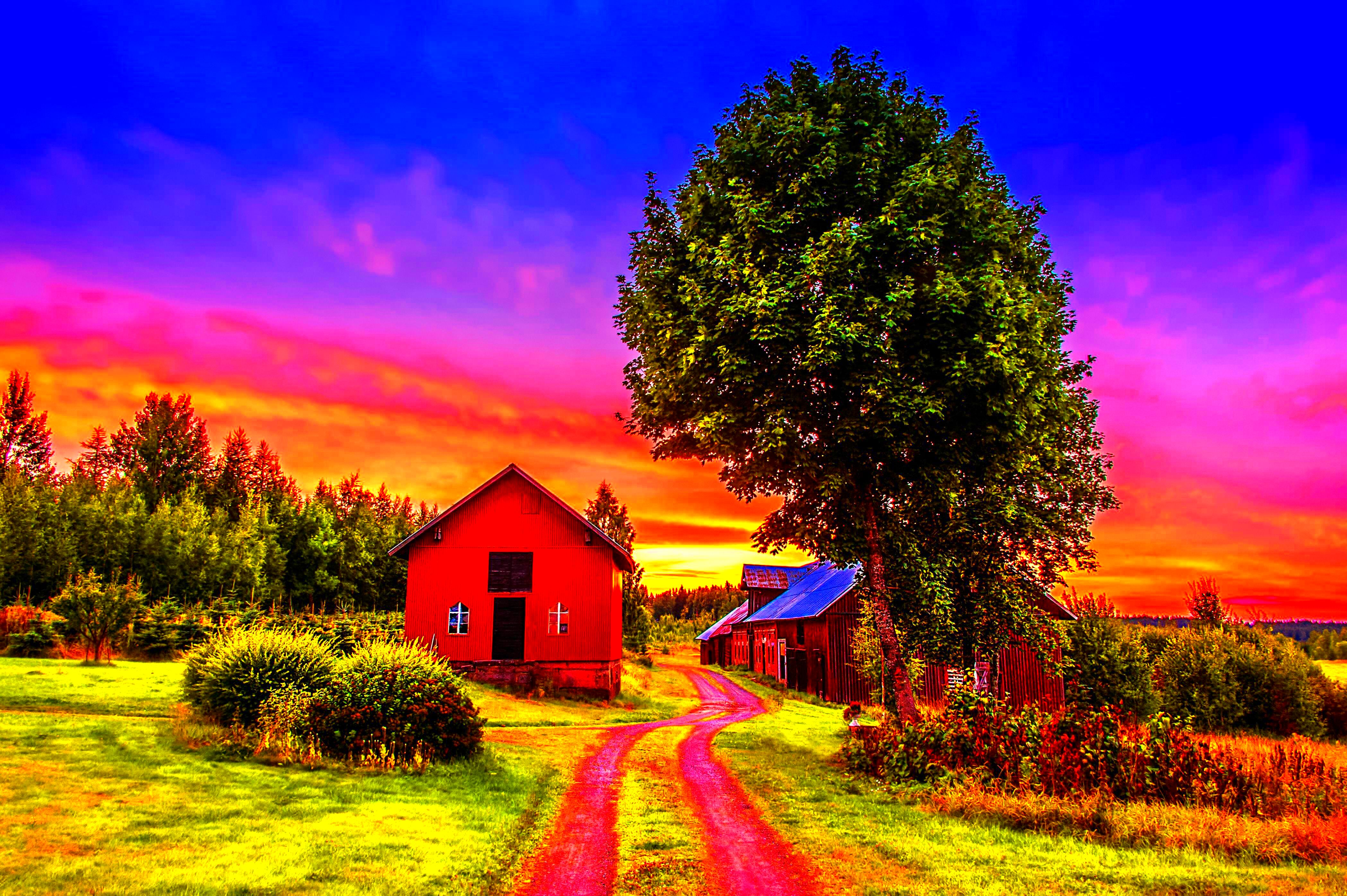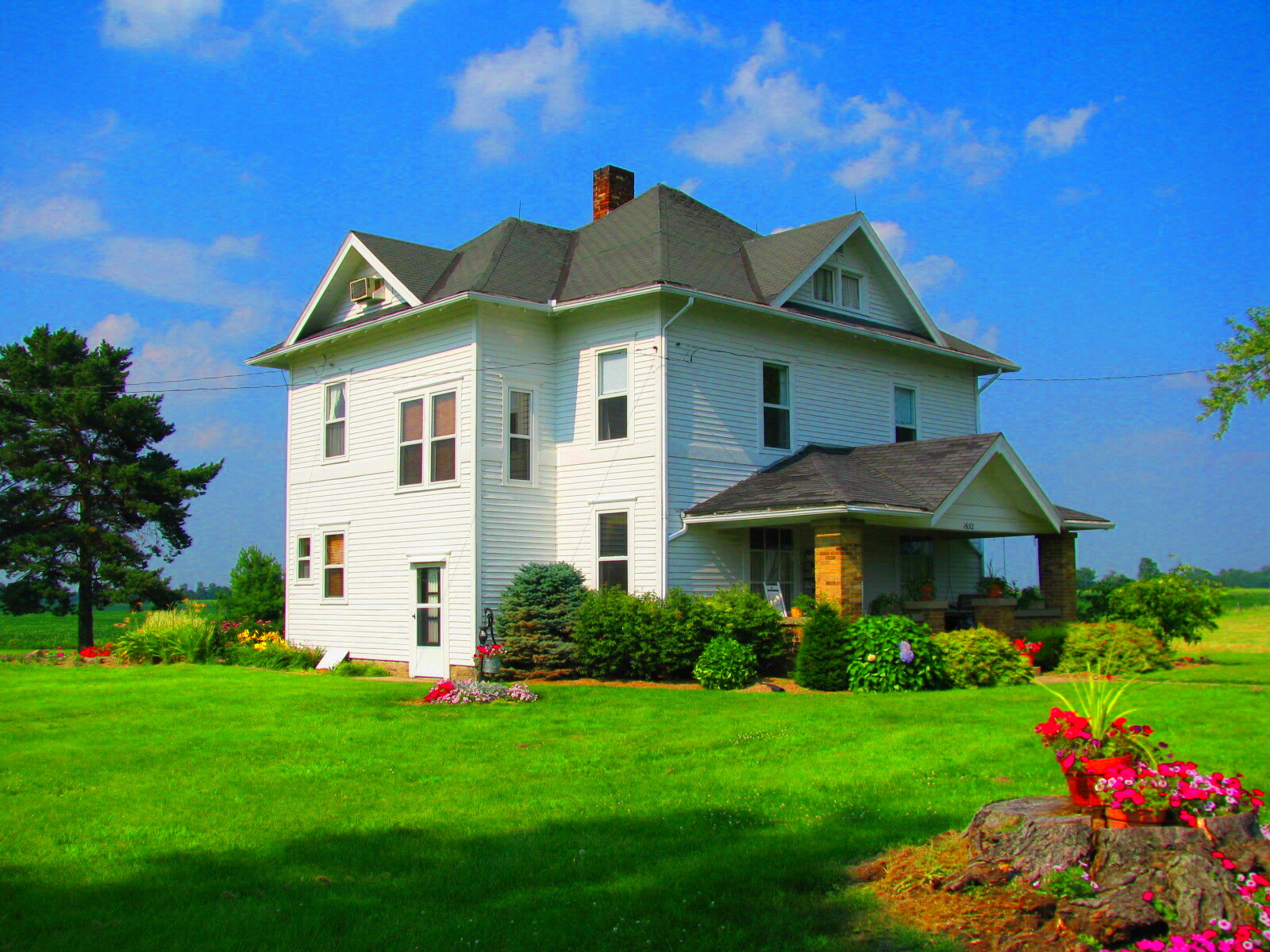The USA is characterized by more than just farmlands populated with animals and fields laden with crops. They also serve as dynamic neighborhoods that support human existence and labor. The accommodation and working places on these farms demonstrate an interesting combination of ruralism and modernity.This blog discusses various types of housing and office setups that are present in American farms. Through illustrations, this article will highlight their dual functionality in rural settings – both practical as well as decorative works of art.
Types of Housing Available on Farms

Various tones suit agriculture housing, depending on the pleasures or requirements of the owner. Here are a few common types:
- Farmhouses: These are traditional homes often found on farms, characterized by their spacious design and inviting porches.
- Mobile Homes: An affordable option for farm workers, mobile homes provide flexibility and can be moved as needed.
- Ranch Style Homes: Single-story homes that blend with the landscape, offering easy access and a cozy atmosphere.
- Guest Houses: These are separate living spaces for visitors, family, or seasonal workers, often designed with comfort in mind.
- Bunkhouses: Basic accommodations for seasonal workers, usually featuring shared rooms and communal areas.
All kinds of residences have their roles to play in fulfilling the various requirements for rural living and yet promoting togetherness among people.
Office Spaces in Agricultural Settings

Farm offices are key to running operations and making sure that productivity is high and steady. Most of these places are constructed with usefulness and relaxation in focus. Typical features include:
| Feature | Description |
|---|
| Location: | Typically situated close to the main farm activities for easy access. |
| Technology: | Equipped with computers, internet access, and agricultural management software. |
| Meeting Spaces: | Designated areas for team discussions, often featuring large tables and whiteboards. |
| Storage: | Space for important documents, equipment, and supplies related to farm operations. |
| Comfort: | Ergonomic furniture and ample lighting create a pleasant working environment. |
The administrative arm of agriculture is supported not only by these office spaces but also by aiding the formulation and implementation of tactics that are instrumental for building a successful agricultural enterprise.
Design Features of Farm Housing and Offices

It is the design of the farm accommodation and office spaces that has a direct impact on the functionality and attractiveness of these areas. The spaces often combine traditional aesthetics with modern needs ensuring comfort and usability. Below are some key design aspects:
- Open Floor Plans: Many farmhouses and offices utilize open layouts to promote interaction and flow. This design fosters a sense of community, making it easier for family members and coworkers to connect.
- Natural Materials: Wood, stone, and metal are popular choices in farm designs, reflecting the rural environment and ensuring durability.
- Large Windows: Ample windows provide natural light and stunning views of the surrounding fields, enhancing the indoor atmosphere.
- Energy Efficiency: Many modern farm buildings incorporate energy-efficient designs, such as solar panels and proper insulation, reducing costs and environmental impact.
- Outdoor Spaces: Decks, porches, and gardens extend living and working areas outdoors, promoting relaxation and enjoyment of nature.
The functionability of such farm houses and offices is greatly improved, thus they contribute positively to well-being of people living or working there.
Benefits of Combining Living and Working Spaces on Farms
There are a number of reasons that could help improve productivity and quality of life through combining farming areas with accommodation. Some of the advantages include:
- Convenience: With homes close to work areas, farmers can easily manage daily tasks, saving time and effort.
- Family Bonding: This arrangement allows families to spend more time together, strengthening relationships while working towards common goals.
- Cost Efficiency: Sharing spaces can reduce expenses related to commuting and maintaining separate facilities.
- Improved Work-Life Balance: Proximity to home helps create a more balanced lifestyle, allowing for better integration of work and family time.
- Enhanced Collaboration: When living and working areas are combined, it encourages teamwork and communication among family members and workers.
In essence, such an unconventional arrangement goes a long way in creating a blooming and unified setting on the farm, which ensures that all those concerned enjoy it.
Challenges Faced in Farm Housing and Office Spaces
In addition to numerous advantages of residing and working in the countryside, various difficulties in terms of accommodation and offices may emerge. Recognizing these impediments is of paramount importance for coming up with feasible resolutions:
- Space Limitations: Farms may face constraints in available space, making it difficult to design comfortable living and working areas.
- Work-Life Boundaries: The overlap between home and work can blur boundaries, leading to potential burnout and stress.
- Maintenance Issues: Farm buildings require regular upkeep, which can be challenging for busy farmers trying to juggle multiple responsibilities.
- Access to Utilities: In rural areas, access to essential services like internet and electricity can be inconsistent, impacting daily operations.
- Weather Considerations: Farm buildings need to withstand harsh weather conditions, requiring robust design and construction methods.
To deal with these obstacles, it requires careful strategizing and creativeness in building so as to make farm homes and work places active and cozy.
Visual Storytelling through Photography of Farm Spaces
With photography, we share tales that are remarkable narratives and in agricultural spaces, they are all over the place just like gold nuggets awaiting to get snagged. For instance, every morning sunshine portrays its own side of farm story; hitting rustic barn or other times showing up very colorful flowers of crops. Visual storytelling operates in this way:
- Emphasizing Lifestyle: Images can depict the daily life on farms, showcasing moments of work, family gatherings, and the beauty of rural living.
- Highlighting Architecture: Pictures can showcase unique architectural styles of farmhouses and offices, emphasizing their charm and functionality.
- Seasonal Changes: Capturing farm spaces across different seasons highlights the changing landscape, from winter’s quietude to the lushness of summer.
- Community and Culture: Photography can illustrate the strong community ties found in farming, featuring local events, festivals, and gatherings.
- Showcasing Sustainability: Images can also highlight eco-friendly practices, such as organic farming or renewable energy solutions, promoting sustainable agriculture.
The behind-the-scenes of farm life come alive through these visual narratives as we acknowledge the efforts and commitment which is part of every farmer’s life making us understand our suppliers much better.
Frequently Asked Questions about Farm Housing and Offices
The particulars of farm housing and office spaces elicit questions from numerous individuals. The following are several frequently asked questions:
| Question | Answer |
|---|
| What types of housing are most common on farms? | Farmhouses, mobile homes, and bunkhouses are typical, catering to different needs. |
| How are farm offices typically designed? | Farm offices focus on functionality with open layouts, natural lighting, and technology integration. |
| What are the benefits of living on a farm? | Convenience, family bonding, and improved work-life balance are some key advantages. |
| What challenges do farmers face with housing? | Space limitations, maintenance issues, and weather impacts can create difficulties. |
| How can photography enhance the understanding of farm life? | Photography captures the beauty and stories of farm life, connecting people to agriculture. |
In other words, these FAQs are aimed at elucidating frequently asked queries and generating greater curiosity into the captivating universe of farm buildings and workplaces.
Conclusion on the Importance of Capturing Farm Spaces in Pictures
Taking pictures of farm landscapes is much more than simply an activity to me; it serves as a means to perpetuate the quintessence of agricultural existence.
Images provide a link between city and country, reminding us about laboriousness involved in farming.They articulate tales about culture, swaying towards sustainable development and gathering people together thus fostering our appreciation towards food that we eat or soil producing it.Certainly with helping us highlight how beautiful these places are, we can also draw attention to their greater importance in our lives.Let us keep on capturing these moments and make sure that farm stories continue being told for ages.
 Various tones suit agriculture housing, depending on the pleasures or requirements of the owner. Here are a few common types:
Various tones suit agriculture housing, depending on the pleasures or requirements of the owner. Here are a few common types: Farm offices are key to running operations and making sure that productivity is high and steady. Most of these places are constructed with usefulness and relaxation in focus. Typical features include:
Farm offices are key to running operations and making sure that productivity is high and steady. Most of these places are constructed with usefulness and relaxation in focus. Typical features include: It is the design of the farm accommodation and office spaces that has a direct impact on the functionality and attractiveness of these areas. The spaces often combine traditional aesthetics with modern needs ensuring comfort and usability. Below are some key design aspects:
It is the design of the farm accommodation and office spaces that has a direct impact on the functionality and attractiveness of these areas. The spaces often combine traditional aesthetics with modern needs ensuring comfort and usability. Below are some key design aspects:
 admin
admin








